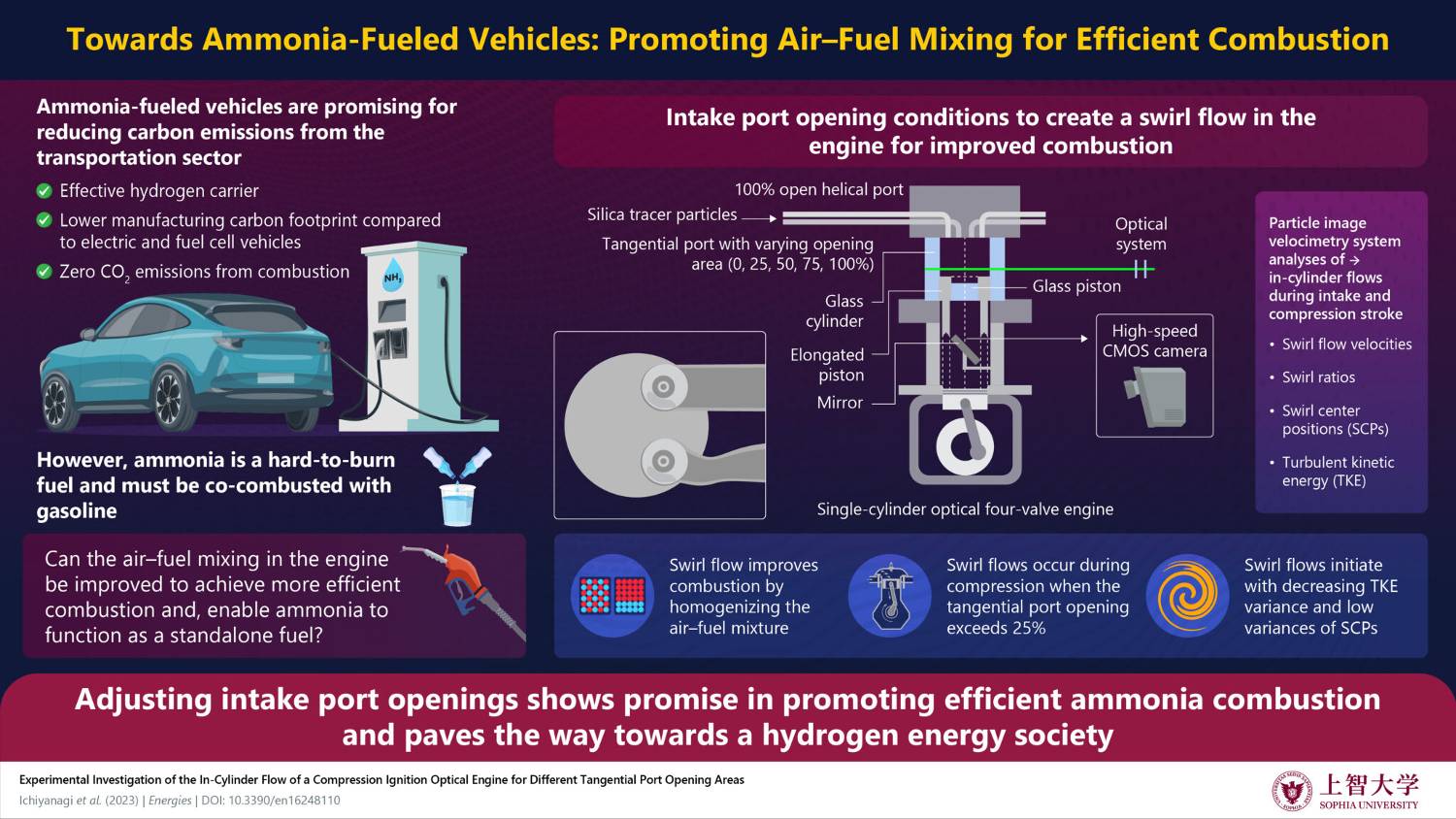As the world seeks alternatives to fossil fuels, ammonia has emerged as a promising clean fuel option, particularly for transportation. However, ammonia is notoriously difficult to burn efficiently in conventional engines. Now, researchers from Sophia University in Japan have made a breakthrough that could pave the way for ammonia-powered vehicles.
In a study published in the journal Energies on December 17, 2023, Professor Mitsuhisa Ichiyanagi, Emir Yilmaz, and Takashi Suzuki have determined optimal intake port opening conditions that promote swirling airflow within engine cylinders. This swirling motion enhances the mixing of air and fuel, leading to more efficient combustion and reduced emissions.
“Airflow within cylinders profoundly affects combustion and emissions by influencing the air-fuel mixing phenomenon,” explains Prof. Ichiyanagi. “With the aim of burning only ammonia, we have basically investigated the relationship between the engine’s intake system and the flow inside cylinders.”

Using an optical single-cylinder diesel engine with a glass cylinder and piston, the researchers visualized the air flows produced by conventional tangential and helical intake ports. By varying the opening of the tangential port from 0% to 100%, they observed the successful generation of swirl flows in the early stage of the compression stroke when the opening was more than 25%.
The formation of these swirl flows correlated with low variances in turbulent kinetic energy during the intake stroke and low variances in the swirl center position during compression. This swirling motion is crucial for efficient ammonia combustion in the engine.
While electric vehicles have dominated the shift towards sustainable transportation, ammonia presents an attractive alternative clean fuel. Unlike hydrogen, ammonia can be stored and transported more easily, and ammonia-fueled engines are expected to have a lower manufacturing carbon footprint than electric vehicles.
“The development of ammonia-fueled engine vehicles is expected to not only reduce carbon dioxide emissions from engines but also contribute to realizing a hydrogen energy society,” says Prof. Ichiyanagi.
As demand for lithium surges, driven by the growth of electric vehicles, ammonia could provide a viable solution to address potential shortages and further decarbonize the transportation sector.
#CleanTransportation #AmmoniaCombustion #EngineOptimization #SustainableEnergy

